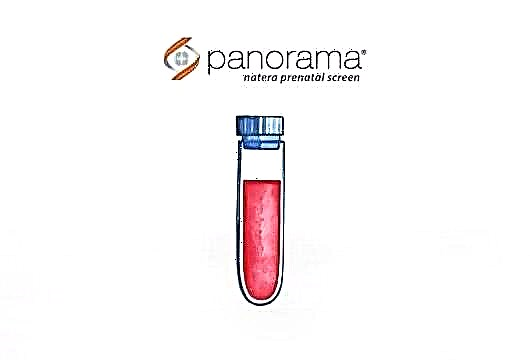
The amniotic fluid is necessary to ensure the normal intrauterine development of the fetus. For the future baby, it is a comfortable physiological environment, an additional source of nutrition and oxygen, as well as a protective barrier that protects him from numerous external threats. In addition, the amniotic fluid plays an important role in the process of childbirth, forcing the opening of the cervix, since it can exert a mechanical effect on it.
therefore the relative lack of water can lead to various disorders of fetal development and interfere with the normal course of pregnancy. Why is lack of water dangerous? What are the degrees of this condition, and which therapeutic method is most effective in such a situation?

What is "moderate lack of water"
The normal volume of amniotic fluid varies depending on the specific gestational age. For the first 8 weeks, this is approximately 5 ml. Further, the amount of fluid begins to increase, and by the end of pregnancy, its total volume reaches an average of 1-1.5 liters. Immediately before childbirth, the water becomes less (their volume is approximately 600-700 ml).
The composition of the amniotic fluid (from the word "amnion" - fetal sac) includes amino acids, vitamins, hormones, trace elements, some types of salts, enzymes, etc.

Amniotic fluid is formed due to the functioning of the epithelial layer of cells of the aqueous membrane of the amnion. They are constantly being updated. At the end of pregnancy, this happens at least every 3 hours.
On average, the fetus has the ability to swallow 4 ml of amniotic fluid per day, and the products of its vital activity enter the maternal excretory system through the pores of the fetal sac. With an uncritical "shift" from normal indicators of the volume of amniotic fluid (closer to the lower limit of the norm), a pregnant woman is diagnosed with moderate lack of water.

Causes
It happens that this condition is registered already at the initial stages of pregnancy. A similar diagnosis is made based on the calculation of the low water index. In this case, the woman needs constant medical supervision and the use of certain methods of drug therapy.
The reasons for the formation of such a violation can be:
- persistent hypertension (increase in total blood pressure);
- the presence in the body of a pregnant woman of any inflammatory process of an infectious nature;
- fetoplacental insufficiency;
- hypoxia (oxygen "starvation") of the fetus;


- diseases of a pregnant woman associated with metabolic disorders;
- the presence of any pathologies in the fetus (underdevelopment of the excretory system will lead to a sharp decrease in the level of primary urine production, which leads to a decrease in the volume of amniotic fluid);
- prolonged pregnancy - the placenta lends itself to reverse development, therefore it is no longer able to provide the fetus with all the necessary substances, including the production of a sufficient volume of amniotic fluid;
- multiple pregnancy - there may be a violation of the process of distribution of placental blood, which can also lead to a deficiency of water;
- violation of secretion in epithelial cells of the aqueous membrane of the amnion.

Types of low water
According to the duration of the course, there are two types of low water: acute and chronic.
Chronic oligohydramnios has several levels of development. This condition requires prolonged therapy. If qualified assistance is not provided on time, the disease will worsen, which will lead to serious consequences both for the expectant mother and for the child.
Chronic amniotic fluid deficiency can occur if a pregnant woman suffers from a systemic illness, such as diabetes.
In order to reduce all possible risks to a minimum and apply appropriate therapy in time, in case of lack of water, a woman needs to register with an antenatal clinic as early as possible and regularly undergo all the necessary examinations.

The most common reason for the formation of acute dryness is an infectious disease. This form of pathology leaves fewer negative consequences for the health of the baby and does not need special treatment, since the situation usually stabilizes with the successful elimination of the disease that caused it.
In addition, oligohydramnios is classified depending on the functional activity of the cells of the aqueous membrane. According to this principle, there are primary and secondary forms. Primary oligohydramnios is characterized by the absence of any functional disorders in the membranes. With secondary low water, damage to the structure of the amnion is observed, as a result of which water flows out.

Symptoms
Quite often, the clinical picture of moderate low water does not have pronounced manifestations (therefore, this condition in some cases can be regarded as borderline with the norm). However, a pregnant woman should pay attention to some of the signs characteristic of this condition, if they occur. Among these symptoms:
- lower abdominal pain;
- painful tremors;
- weak and rare tremors;
- the size of the uterus does not correspond to the gestational age (detects the obstetrician-gynecologist).
If any of these symptoms appear, even if they seem insignificant, it is necessary to immediately inform the attending physician about them so that he prescribes a series of examinations with which it will be possible to identify oligohydramnios.

Possible complications
An insufficient volume of amniotic fluid can be the impetus for the development of a number of complications, among which:
- Violation of blood flow in the umbilical cord. Because of this, the baby does not get enough oxygen and food. Persistent hypoxia can provoke the development of irreversible disorders in a child and even lead to his death.
- "Failure" in the process of circulation of amniotic fluid. Such a condition can lead to the addition of an infection, and also significantly increases the likelihood of a traumatic birth.
- Flat amnion. This complication can provoke a weakening of labor in the first stage of labor.
- Placental abruption. Small fragments of the placenta are retained in the uterus, which increases the risk of bleeding.
- Underdevelopment of the fetus. If, in the process of intrauterine development, the child regularly did not receive the necessary amount of nutrients and trace elements, then his body weight at birth will be less than normal.

Diagnostic methods
The main methods of instrumental diagnostics that a doctor uses to determine the volume of amniotic fluid are ultrasound and Doppler ultrasound. With their help, it is possible to assess the umbilical blood flow, how much the child is lagging behind in development, as well as the state of the vessels of the expectant mother and fetus.
In addition, cardiotocography can be prescribed by an obstetrician-gynecologist to study the functional ability of the baby's cardiovascular system. With established moderate oligohydramnios in the third trimester this study is carried out at 30, 32, 34 and 36 weeks of pregnancy.
When registering, a woman must be tested for the presence of sexually transmitted infections.

Therapy
Correction of this condition should be carried out in several directions:
- the appointment of drugs that normalize metabolic processes in the placenta;
- drug therapy of the underlying disease.
If a pregnant woman suffers from any disease associated with metabolic disorders, or is overweight, then, most likely, a specialist who monitors the pregnancy will recommend a special diet.
Moderate oligohydramnios usually does not need constant monitoring in a hospital, it is possible to normalize the state of the future on an outpatient basis.

In addition to drug therapy, with moderate oligohydramnios, the expectant mother must observe some restrictions regarding her physical activity. She must also make sure that her daily diet contains foods rich in vitamins and minerals.
In many ways, the decisive role in drawing up a therapy plan is played by the gestational age. This pathology requires the most careful monitoring in the 2nd trimester. If oligohydramnios is diagnosed at 37 weeks, then this may be an indication for a cesarean section.

Prevention
Currently, no effective methods have been developed to prevent the risk of developing oligohydramnios. But there are a number of recommendations, the exact implementation of which will help a pregnant woman reduce the risk of this pathology.
Plays an important role the diet of the expectant mother. It must be rich in all elements (vitamins, proteins, trace elements and other valuable substances) necessary for the normal development of the fetus and ensuring the satisfactory condition of the pregnant woman.

It is very useful for the expectant mother and the health of her baby to observe balanced regimen of physiological stress and rest. Labor should be moderate, as excessive fatigue can adversely affect the health of a woman and her baby.
However, you should not go to extremes and completely deprive yourself of even minimal loads, as this can lead to rapid weight gain, which can complicate the course of pregnancy.

One of the main factors that determine the nature of the course of pregnancy and the success of delivery is emotional background of a woman. The presence of stress and regular mental overload dramatically increases the risk of developing any associated complications, including oligohydramnios. A pregnant woman needs to undergo all examinations prescribed by a doctor on time.
It is necessary to use any supplements or medications only with the approval of a specialist, and not relying on incompetent reviews.
These recommendations will help reduce the risk of not only oligohydramnios, but also other pregnancy pathologies.

Conclusion
Moderate oligohydramnios is formed against the background of some pathologies of intrauterine development of a child or diseases of a pregnant woman. Its hallmark is the absence of pronounced symptoms. When timely therapy this deviation does not pose a great threat to the normal development of the fetus and the health of the expectant mother. The period at which moderate low water was diagnosed is important, since in different periods of pregnancy such a violation can have its consequences.
Next, we recommend watching a video in which a gynecologist will talk about what oligohydramnios is and whether this diagnosis is scary.



